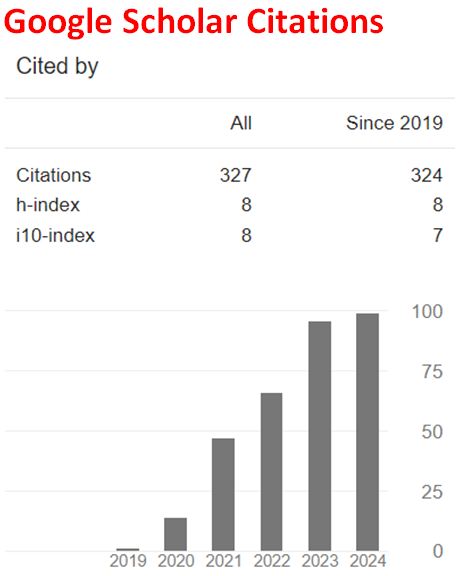The chemistry of Obermayer test for indican in urine
Abstract
The purpose of this article is to provide the reaction mechanism of the process occurring during the Obermayer colour test for indican in urine. This test differs from cognate tests because no chemical oxidant is used in order to oxidise 3-hydroxy-indol to indigo blue, but exclusively fuming hydrochloric acid is employed. From this fact it is deduced the intervention of aerial oxygen. The approach to the chemistry of this test is based on the chemical deportment of reagent and substrate, in union with cogent reasons (Theoretical Organic Chemistry). The proposed intermediates show a parallelism with those suggested in alkaline medium during the obtention of indigo blue from natural source. However, the formation of indigo red (indirubin) in acidic medium goes through different intermediates and the reaction mechanism is given here for the first time.
Downloads
References
Collins English Dictionary Complete and Unabridged (12th ed.). (2014). Indican. Harper Collins Publishers. https://www.collinsdictionary.com>diccinario>ingles
Novis, B.H., Bank, S., Marks, I.N., & Redmond, A.O. (1971). The value of estimating urinary indican. South African Medical Journal, 45(9), 1167-1170. https://www.ajol.info/index.php/samj/article/view/170460
Merck, E. (1903). Merck’s Reagentien Verzeichnis (p. 106). Darmstadt: Springer. https://doi.org/10.1007/978-3-642-99730-3
Sánchez-Viesca, F., & Gómez, R. (2024). On apomorphine detection by colour reactions. Journal of Chemical, Biological and Physical Sciences, 15(1), 001-005. https://doi.org/10.24214/jcbps.A.15.1.00105
Sánchez-Viesca, F., & Gómez, R. (2024). A complete and sustained organic/inorganic reaction mechanism of Baeyer’s test. World Journal of Chemical and Pharmaceutical Sciences, 4(2), 1-5. https://doi.org/10.53346/wjcps.2024.4.2.0023
Sánchez-Viesca, F., & Gómez, R. (2024). A novel transamination reaction in a murexide-like sequence for caffeine detection. Earthline Journal Chemical Sciences, 11(1), 437-444. https://doi.org/10.34198/ejcs.11324.437444
Sánchez-Viesca, F., & Gómez, R. (2024). Mechanism of the interaction of alkaline tungstate with uric acid. Journal of Chemical, Biological, and Physical Sciences, 14(4), 311-315. https://doi.org/10.24214/jcbps.A.14.4.31115
Sánchez-Viesca, F., & Gómez, R. (2023). The mechanism of Frabot test for uric acid. Earthline Journal of Chemical Sciences, 10(1), 125-130. https://doi.org/10.34198/ejcs.10123.125130
Merck, E. (1903). Merck’s Reagentien Verzeichnis (p. 61). Darmstadt: Springer. https://doi.org/10.1007/978-3-642-99730-3
Sánchez-Viesca, F., & Gómez, R. (2022). The chemistry of Heller’s test for urine Indican detection. Magna Scientia Advanced Research and Reviews, 05(01), 025-029. https://doi.org/10.30574/msarr.2022.5.1.0038
Sánchez-Viesca, F., & Gómez, R. (2020). A reaction route of natural indigoids. Journal of Research in Chemistry, 1(2), 01-04. https://www.researchgate.net/publication/355049604_A_reaction_route_of_natural_indigoids
Cohn, A.I. (1903). Tests and reagents (p. 118). New York: J. Wiley & Sons.
Obermayer Test, Chem-watch. https://www.chemwatch.net/es/blog/obermayer-test/
Russell, G.A., & Kaupp, G. (1969). Reactions of resonance stabilized carbanions. Oxidation of carbanions. Journal of American Chemical Society, 91(14), 3851-3859. https://doi.org/10.1021/ja01042a028
Krishnaswamy, N.R., & Sundaresan, C.N. (2012). Fascinating organic molecules from nature. Resonance-Journal of Science Education, 17, 928-942. https://doi.org/10.1007/s12045-012-0107-7
Acidity of phenols. https://chem.libretexts.org>Acidity-of-Phenols
Luder, W.F., & Zuffanti, S. (1961). The electronic theory of acids and bases (2nd ed., p. 71). New York: Dover.
Gordon, J.L.M. (1993). Ipso attack of aromatic systems (PhD Thesis). University of Canterbury, Christchurch, New Zealand. https://ir.canterbury.ac.nz>handle

This work is licensed under a Creative Commons Attribution 4.0 International License.


